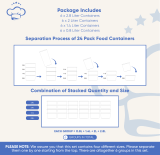
Thank you for purchasing a Canon product.
Safety Precautions
1.
Do not look at the sun or a bright light source through the
lens or camera.
Doing so could result in loss of vision. Looking
at the sun directly through the lens is especially hazardous.
2.
Whether it is attached to the camera or not, do not leave the
lens under the sun without the lens cap attached.
This is to
prevent the lens from concentrating the sun’s rays, which could
cause a fire.
Handling Cautions
If the lens is taken from a cold environment into a warm one,
condensation may develop on the lens surface and internal
parts.
To prevent condensation in this case, first put the lens
into an airtight plastic bag before taking it from a cold to
warm environment. Then take out the lens after it has warmed
gradually. Do the same when taking the lens from a warm
environment into a cold one.
1. Mounting and Detaching the Lens
See your camera’s instructions for details on mounting and
detaching the lens.
• After detaching the lens, place the lens with the rear end up to
prevent the lens surface and contacts from getting scratched.
• If the contacts get soiled, scratched, or have fingerprints on them,
corrosion or faulty connections can result. The camera and lens
may not operate properly.
• If the contacts get soiled or have fingerprints on them, clean them
with a soft cloth.
• If you remove the lens, cover it with the dust cap. To attach it
properly, align the lens mount index and the
index of the dust
cap, and turn clockwise. To remove it, reverse the order.
2. Setting the Focus Mode
To shoot in autofocus (AF) mode, set the focus mode switch to AF .
To shoot in manual focus (MF) mode, set the focus mode switch
to MF, and focus by turning the focusing ring. The focusing ring
always works, regardless of the focus mode.
• After autofocusing in ONE SHOT AF mode, focus manually by
pressing the shutter button halfway and turning the focusing
ring (Full-time manual focus) .
3. Infinity Compensation Mark
To compensate for shifting of the infinity focus point that results
from changes in temperature.
The infinity position at normal temperature is the point at which the
vertical line of the L mark is aligned with the distance indicator on
the distance scale .
• For accurate focusing in MF on subjects at infinity distance, look
through the viewfinder while rotating the focusing ring.
4. Infrared Index
The infrared index corrects the focus setting when using
monochrome infrared film. Focus on the subject in MF, then
adjust the distance setting by moving the focusing ring to the
corresponding infrared index mark .
• Some EOS cameras cannot use infrared film. See the instructions
for your EOS camera.
• The infrared index position is based on a wavelength of 800 nm.
• Be sure to observe the manufacturer’s instructions when using
infrared film.
• Use a red filter also when you take the picture.
Nomenclature
Distance scale
Infrared index
Distance index
Contacts
Lens mount index
Focus mode switch
Focusing ring
EF Lenses
EF14mm f/2.8L USM
EF20mm f/2.8 USM
EF24mm f/1.4L USM
EF28mm f/1.8 USM
EF35mm f/1.4L USM
EF50mm f/1.4 USM
EF85mm f/1.8 USM
EF100mm f/2 USM
EF200mm f/2.8L USM
Instructions
COPY

CT1-7538-007 © CANON INC. 1998 2008.5
5. Filters
You can attach filters to the filter mounting thread on the front of
the lens.
• Use a polarizing Canon filter.
Filter holder for the EF14mm f/2.8L USM
There is a gelatin filter holder at the rear of the lens. Cut the gelatin
filter to fit within the white frames. Then insert the gelatin filter into
the filter holder
.
6. Hood
The lens hood can keep unwanted light out of the lens, and also
protects the lens from rain, snow, and dust.
EF50mm f/1.4 USM
Fit the hood to the hood mount, then turn it in the direction of the
arrow to attach it securely.
EF20mm f/2.8 USM, EF24mm f/1.4L USM, EF28mm f/1.8 USM,
and EF35mm f/1.4L USM
To attach the hood, align the hood’s attachment position mark
with the red dot on the front of the lens, then turn the hood in the
direction of the arrow until the lens’s red dot is aligned with the
hood’s stop position mark
.
EF85mm f/1.8 USM and EF100mm f/2 USM
Press the buttons on both sides of the hood to attach
.
EF200mm f/2.8L USM
Pull the hood out from the front of the lens until it stops
.
Lenses other than the EF14mm f/2.8L USM and EF200mm f/2.8L
USM
The hood can be reverse-mounted on the lens for storage.
• Part of the picture may be blocked if the hood is not attached
properly.
• When attaching or detaching the hood, grasp the base of the
hood to turn it. To prevent deformation, do not grasp the rim of
the hood to turn it.
Q
The lens length is measured from the mount surface to the front
end of the lens. Add 21.5 mm when including the lens cap and
dust cap.
Q
The size and weight listed are for the lens only, except as
indicated.
Q
Aperture settings are specified on the camera.
Q
All data listed is measured according to Canon standards.
Q
Product specifications and appearance are subject to change
without notice.
Q
Case and hood not provided with some models.
Q
Filters sold separately.
This device complies with Part 15 of the FCC Rules. Operation
is subject to the following two conditions: (1) This device may
not cause harmful interference, and (2) this device must accept
any interference received, including interference that may cause
undesired operation.
Do not make any changes or modifications to the equipment
unless otherwise specified in the instructions. If such changes
or modifications should be made, you could be required to stop
operation of the equipment.
This equipment has been tested and found to comply with the
limits for a class B digital device, pursuant to part 15 of the FCC
Rules.
These limits are designed to provide reasonable protection against
harmful interference in a residential installation. This equipment
generates, uses and can radiate radio frequency energy and, if
not installed and used in accordance with the instructions, may
cause harmful interference to radio communications.
However, there is no guarantee that interference will not occur
in a particular installation. If this equipment does cause harmful
interference to radio or television reception, which can be
determined by turning the equipment off and on, the user is
encouraged to try to correct the interference by one or more of the
following measures:
• Reorient or relocate the receiving antenna.
• Increase the separation between the equipment and receiver.
• Consult the dealer or an experienced radio/TV technician for
help.
This Class B digital apparatus complies with Canadian ICES-003.
Specifications
Angle of view
Lens
construction
Minimum
aperture
Max. magnification and field of view
Min. focusing
distance
Filter
diameter
Max. diameter and length Weight Hood Case
Diagonal Vertical Horizontal
EF14mm f/2.8L USM 114° 81° 104° 10-14 22 0.10X/246 × 375 mm (9.7” × 14.8”) 0.25 m/0.82 ft. *1 77 × 89 mm (3.0” × 3.5”) 560 g/19.6 oz. *2 LP1016
EF20mm f/2.8 USM 94° 62° 84° 9-11 22 0.14X/176 × 264 mm (6.9” × 10.4”) 0.25 m/0.82 ft. 72 mm 77.5 × 70.6 mm (3.1” × 2.8”) 405 g/14.2 oz. EW-75II LP1214
EF24mm f/1.4L USM 84° 53° 74° 9-11 22 0.16X/150 × 227 mm (5.9” × 8.9”) 0.25 m/0.82 ft. 77 mm 83.5 × 77.4 mm (3.3” × 3.1”) 550 g/19.4 oz. EW-83DII LP1214
EF28mm f/1.8 USM 75° 46° 65° 9-10 22 0.18X/139 × 212 mm (5.5” × 8.3”) 0.25 m/0.82 ft. 58 mm 73.6 × 55.6 mm (2.9” × 2.2”) 310 g/10.9 oz. EW-63II LP814
EF35mm f/1.4L USM 63° 38° 54° 9-11 22 0.18X/136 × 206 mm (5.4” × 8.1”) 0.3 m/0.98 ft. 72 mm 79 × 86 mm (3.1” × 3.4”) 580 g/20.5 oz. EW-78C LP1214
EF50mm f/1.4 USM 46° 27° 40° 6-7 22 0.15X/164 × 249 mm (6.5” × 9.8”) 0.45 m/1.48 ft. 58 mm 73.8 × 50.5 mm (2.9” × 2.0”) 290 g/10.2 oz. ES-71II LP1014
EF85mm f/1.8 USM 28°30’ 16° 24° 7-9 22 0.13X/191 × 287 mm (7.5” × 11.3”) 0.85 m/2.79 ft. 58 mm 75 × 71.5 mm (3.0” × 2.8”) 425 g/14.9 oz. ET-65III LP1014
EF100mm f/2 USM 24° 14° 20° 6-8 22 0.14X/175 × 262 mm (6.9” × 10.3”) 0.9 m/2.95 ft. 58 mm 75 × 73.5 mm (3.0” × 2.9”) 460 g/16.1 oz. ET-65III LP1014
EF200mm f/2.8L USM 12° 7° 10° 7-9 32 0.16X/152 × 226 mm (6” × 8.9”) 1.5 m/4.92 ft. 72 mm 83 × 136.2 mm (3.3” × 5.4”) 790 g/27.7 oz. *2 LH-D18
*1 Built-in gelatine filter holder
*2 Built-in
COPY
-
 1
1
-
 2
2
Ask a question and I''ll find the answer in the document
Finding information in a document is now easier with AI
Related papers
-
Canon EF 28 f/1.8 USM Owner's manual
-
Canon EF14mm f-2.8L User manual
-
Canon EF 50mm f/1.4 USM + 320EX User manual
-
Canon EF 50mm f/1.8 II User manual
-
Canon EF 50mm f/1.8 II User manual
-
Canon EF20 f/2.8 USM User manual
-
Canon 9523B002 User manual
-
Canon 9523B002 User manual
-
Canon 0570C005AA User manual
-
Canon 2537A003 User manual
Other documents
-
 Chef s Path B0822JNHFY Airtight Food Storage Container Set User guide
Chef s Path B0822JNHFY Airtight Food Storage Container Set User guide
-
Meyer Sound Portable Speaker USM-1P User manual
-
Sony DVP-FX755 Operating instructions
-
 Ruckus MM2211-EXT User manual
Ruckus MM2211-EXT User manual
-
Sony dvp fx730 Owner's manual
-
Sony DVP-FX935 Operating instructions
-
Sony DVP-FX750 User manual
-
TEAC TASCAM 388 STUDIO 8 Operation & Maintenance Manual
-
Sony DVP-FX955 Operating instructions
-
Sony DVP-FX740DTB Operating instructions



